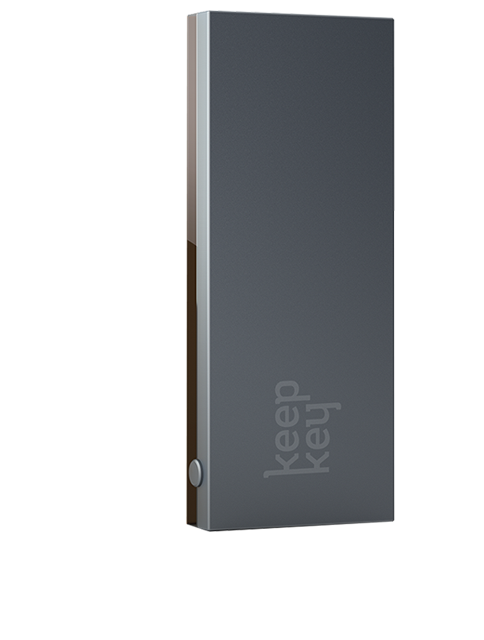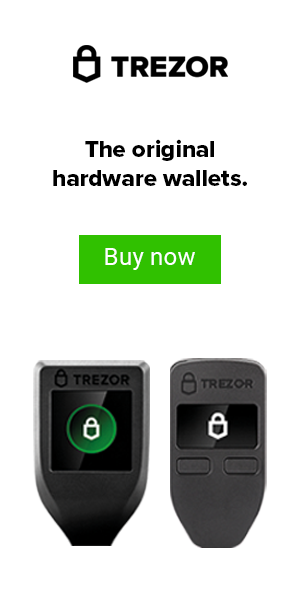Secux V20 vs Ledger Nano X! In this comparison, we are going to do a head-to-head of two of the most competitive and popular new cryptocurrency hardware wallets in this edition of the hardware wallet roundups.
I am going to dive into which of these bluetooth hardware wallets is better and more secure. How big is your portfolio? Do you need mobile AND desktop support? Do you use any 3rd party wallets for integration? Do you need web-based access instead of a required download?
These are all questions you will need to consider when deciding which of these wallets will be best for you. At the end of the day, the coin support is one of the most important factors (besides security) when deciding which hardware wallet is best for you.
Ultimately, if it doesn’t support the coins you want to store offline, it won’t work for your particular situation. So keep that in mind as we dive into what I consider to be the most important factors when making such an important decision, such as choosing a cryptocurrency hardware wallet.
Ledger Nano X: Overview
The Nano X comes beautifully packaged with the device itself, a USB-C cable, a set of instructions and recovery seed cards. The previous bulky buttons that were on top of the device are now seamlessly integrated on it in a way that’s even a bit hard to notice. All in all a beautiful design. The primary features of this device are the bluetooth connection which allows you to manage this device using your smartphone via the iOS and Android app.
Additionally, you can now hodl, store, or manage up to 100 cryptos simultaneously, all without access to your desktop or laptop computer. This is easily it’s best new features, but aside from the upgraded storage capacity and the wireless connectivity, the device itself is now larger, has an integrated 2-function button, and an overall larger screen for verifying transactions. With a trusted device and a more universal charging cable, this makes it much more compelling to spend the extra money to store more coins and one that you can easily take with you as you travel.
Ledger Nano X: Security


Ledger is at the forefront of developing the industry’s device security. How? And in what ways?
CC EAL5+ SECURE ELEMENT
Only Ledger’s devices can claim the French cybersecurity agency ANSSI’s full certification.
The Nano X and Nano S both feature what is called a ‘secure element’. The chip seen below is the next generation chip that comes in the Nano X:
The secure chip meets the CC EAL5+ certification and run’s Ledger’s proprietary BOLOS operating system.
A Secure Element is a secure chip that…embeds intrinsic countermeasures against many known attacks. This kind of chip is tamper-resistant and protects your device to a range of different attacks.”
Ledger Nano X: User Experience (UX)
Honestly, the user experience is a massive upgrade from the Ledger Nano S. With that said, It has a few usability issues that I find to be quite difficult to overcome. Although this device is physically larger than it’s predecessor, it still has a fairly difficult to use early experience.
For example, the screen is still fairly small and still cannot accommodate a QR code for scanning. This may not seem like a big deal, but after using several hardware wallets, it really does make a big difference. Using a QR code is not only safer (because it removes the chance of error from manually typing in a wallet address), but it is incredibly faster and makes the entire of transacting offline, a much easier experience.
Although this device has stepped up the quality considerably from it’s latest iteration, I still feel that utilizing an all new form factor could have been beneficial and a little more innovative than replicating their 1st generation device with a few small tweaks.
Ledger Nano X: Coin Support


The Ledger Nano X utilizes the “Ledger Live” dashboard which is a desktop application that allows you to manage all of your coins, portfolio, and potential trades in an easy to use application. You can use this on both an iOS or Android app as well as a desktop.
This app allows you to manage up to 1,100 coins that are supported by the device. However, only about 200 of them are “native” apps. This means that you can manage them directly within the Ledger Live app, without having to connect to a 3rd party wallet, such as MyEtherWallet or MyCrypto. I will leave a link HERE with a list of fully supported coins.
Secux V20: Overview


After unboxing and looking at the SecuX V20 device, I was pleasantly surprised that the overall quality and screen size was much larger than other mid-tier devices in this price range, such as the Ledger Nano X and the Trezor Model T. Now, those devices are classic and original devices, but they are tiny and made of a somewhat flimsy, plastic form-factor.
This device has a beautiful brushed aluminum reinforced hardware wallet. It has a clean flat display and the back has a durable padding rubber-like backing that is built for abuse and stability. I would have no qualms with dropping this device as it’s built very solidly and feels heavy in your hand, unlike their entry-level devices. The SecuX V20 has only one MicroUSB port and one button for activating the device and for 2FA.
The SecuX V20 device is the only one with a unique form factor and octagon design that is very sleek and very durable. This device is connected by bluetooth! That means it has wireless support and can be managed with full functionality by the SecuX app for iOS and Android. It also has a USB cable, so it can be managed online with a web wallet as well, hence, why it’s considered a “Cross-Platform” device.
The unique and notable coins that are natively supported on these devices is Groestlcoin (GRS) and Ripple (XRP). Not many hardware wallets support these coins natively, however, almost all hardware wallets support an array of ERC-20 tokens and your main-stream coins, like BTC and ETH.
Secux V20: Security


The SecuX V20 is placed with a CC EAL 5+ Certified Security Element (SE) which always ensures that stored private keys, as well as the device PIN code, are perfectly protected against any form of attack. Other significant security features include:
- Pre-installed tamper-resistant firmware as well as an upgrade system
- Physical confirmation for every transaction
- A one-time password or custom PIN code for controlling device access or the wallet apps
- Anti-tamper packaging
- Randomized digital keyboard for preventing consequences of keystrokes
Also, the wallet complies with the BIP32, BIP39 and BIP44 standards which allow the user to generate passwords of 12, 18 and 24 words for funds recovery.
Secux V20: User Experience (UX)


The picture below showcases the key features of this device, is the “Cross-Platform Support”, which means it can be managed via desktop, laptop, and mobile. Now, as I mentioned this device CAN conduct transactions via the mobile app, but also the Secux W20 can too, as they are bluetooth enabled.
This truly is one of the first multiple platform devices that you can manage on the big desktop screen, as well as wirelessly on the go. It has a 600mAH battery which can be charged from an empty battery within 30 minutes on the second charge
Secux V20: Coin Support
This is usually the most important factor when considering the hardware that you choose. This top-tier wallet from SecuX has support for the following coins as of this writing: BTC, ETH, XRP, BCH, GRS and LTC. It also supports all ERC-20 tokens as well.
Luckily, they update the firmware frequently and they plan on adding more coins as well in the near future. If you are new to “HODLing” and you do not need any specific coins outside of these top market cap coins and ERC-20 Ethereum-based tokens to start, then this is a good option.
Secux V20 vs Ledger Nano X: Conclusion
Overall, the SecuX V20 is a robust, and very secure wallet. For the price point, features and capabilities, the only thing that is comparable is the Ledger Nano X, which is also a bluetooth and wireless crypto wallet using the same security chip.
With the Ledger Nano X, it comes in a little cheaper at $119, and it also allows you to hold 100 apps (or different cryptocurrencies simultaneously), but it comes in a cheap and somewhat flimsy plastic enclosure that has a very tiny screen. Personally, I prefer a larger display and I’ve used almost all (if not all) hardware wallets out there, and confirming the address you’re sending to is MUCH easier to do on a large, bright, full color display. Additionally, this device has QR code support, which makes it easier when sending funds from a mobile wallet directly to your hardware wallet.
The one thing I did NOT like about the SecuX V20 is the lack of coin support with only 6 coins supported natively, and a handful of more coins to be supported in the future. If you plan on only “HODLing” the top 5 market-cap coins and perhaps a few ERC-20 tokens, I would probably say this is a better option and has a much cleaner and larger display for managing and verifying transactions.
With my discount, (Code: BITCOINLOCKUP), it will take the price to around $134 and free shipping. When compared to other entry level wallets, you can’t beat the sturdiness and large screen (which is more important than you think), when managing your assets offline.
What do you think? Would you choose the Secux V20 over the Ledger Nano X? Let us know down below in the comments!
Cheers,
The Crypto Renegade
NOTE: This post may contain affiliate links. This adds no cost to you but it helps me focus on giving as much value as possible in every single post by being compensated for recommending products that help people succeed.


















